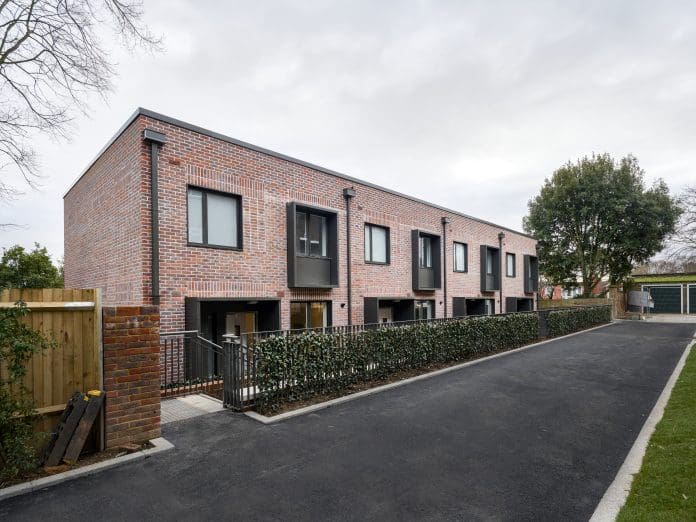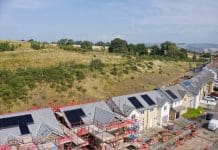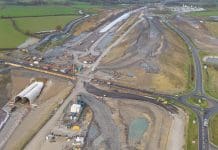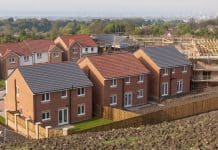The pressures on housing delivery present many challenges but also an opportunity to think differently about how we build in the UK, argues Mark Powell, managing director of social and affordable housing developer EDAROTH (Everyone Deserves a Roof Over Their Head)
There are clearly many challenges facing the housing sector today, from the need for investment to a shortage of skills, the overdue reform of the planning system and economic uncertainty, while all the time we draw closer to net zero targets in a sector that is responsible for a fifth of greenhouse gas emissions in the UK.
All of which were in play before the Labour government came into power last year with its headline pledge to build 1.5m homes.
While it’s hard to escape those pressures on a sector already under strain, we must also see there is a real opportunity to think differently about how we build new affordable homes and social housing using an approach that addresses those challenges at the same time.
Industrialised production
Part of the solution can come from agile processes, such as Industrial Production (also known as Modern Methods of Construction), which brings much-needed additional housing delivery.
This is an approach that ensures the majority of the building parts are manufactured in the UK before being assembled on-site, reducing the carbon impact of development while simultaneously speeding up delivery and reducing disruption to local residents.
There are huge efficiencies to be gained and being factory-based means you are unaffected by the weather and other external factors that can delay progress on-site. And you can guarantee the parts will be produced on time and, on average, cut on-site construction time by 50%.
It also means opening up construction job opportunities as people who may not be able to work on a site for accessibility reasons may well be able to work in a factory setting.
By addressing some of the potential supply chain challenges through an industrialised production method, it creates the opportunity to deliver high quality homes more quickly, safely and at a reduced cost when compared like-for-like with traditional methods.
These are homes which embody a modern approach to housing, providing sustainable-by-design affordable social homes, all delivered to EPC (Energy Performance Certificate) A+.
Rethinking the landscape
Being innovative in housebuilding also means thinking about the ‘where’ as much as the ‘how’.
While the big housing developers will continue to target large plots for high volume, a more agile approach can transform smaller parcels of land across a number of sites.
This can potentially deliver hundreds of new affordable and social homes across a city and its suburban areas where people want to live – being near their place of work and easy reach of city centre facilities.
At EDAROTH, we are working with several local authorities to do just this, including Bristol, where some 2,000 brownfield sites have been rapidly assessed to identify development opportunities for social rent homes.
These are pockets of land that are often ignored by traditional developers due to complexity and costly remediation. However, linked to existing infrastructure, these sites frequently offer better than average access to education, healthcare, employment and economic centres.
This is crucial for the government’s growth agenda as we need to build communities, not just houses, that are thriving, accessing opportunities for work and education to generate that growth.
Future of housing delivery
We welcome the government’s pledge to deliver 1.5m homes over the next parliamentary term and vastly increase the delivery of new social and affordable homes.
The prime minister’s announcement on 23 January to put builders before blockers and prevent needless delays in the planning system is also a step in the right direction.
But in order to achieve this ambition, we believe government must look towards SMEs and offsite manufacturing developers who have the capacity to innovate and deliver the additional homes that are needed.
As an industry, we also need to see a big increase in the amount and stability of the housing delivery pipeline for MMC providers. A larger and predictable housing construction pipeline will, in turn, drive investment into growing capacity and further drive efficiencies, while considerably reducing unit costs.
Homes England has sought to address this through their strategic partnership grant programme, with all partners expected to deliver a minimum of 25% of new homes using MMC. This is a policy that needs to be fully enforced as the increased certainty will drive greater levels of private sector investment and sustain much-needed innovation within the housing sector.
Our purpose is to provide safe, secure and truly affordable homes where people want to live, work and prosper. To do this will require a multi-channel approach, including new approaches and different thinking alongside the existing housing delivery vehicles to meet our housing needs.
But the impetus is there and it’s a change that could benefit many generations to come, provided the conditions for growth are created.














